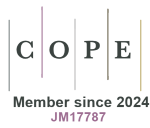CHE-S® as a tool to predict the Caregiver’s ability to actively manage disability of stroke patients admitted to the ward of the complex rehabilitation structure of ASUGI
CHE-S® come strumento predittivo della capacità di gestione attiva della disabilità da parte del Caregiver nei pazienti con esito di ictus ricoverati presso il reparto della struttura complessa di riabilitazione di ASUGI
DOI:
https://doi.org/10.33393/abtpn.2020.2124Keywords:
Assessment, Caregiver, Patient engagement, Rehabilitation, StrokeAbstract
Introduction: This article affirms that measuring the Caregiver’s emotional experience and engagement, especially as the condition of the person assisted changes, is useful for assessing the sustainability of the care plan.
Methods: With this pilot study, aimed at detecting the level of Caregiver engagement, by using the Caregiving Engagement Scale (CHE-S®), for people suffering from chronic and/or fragile pathologies, it was decided to verify the relationship between engagement levels and other variables such as: socio-demographic characteristics of the Caregiver; duration and frequency person; clinical characteristics of the assisted person.
Results and Conclusions: In the future, the results of this research will allow to define new working practices to support those who take on the responsibility and burden of caring for a sick, fragile, disabled family member.
References
- Barr V, Robinson S, Marin-Link B, et al. The expanded chronic care model. Hosp Q. 2003;7(1):73-82.
- Mislej M. Nursing abilitante. Roma: Carrocci. 2006;155.
- Colombo F, Llena-Nozal A, Mercier J, et al. Help wanted? Providing and paying for long-term care. Paris: OECD Publishing. 2011;86-101. Disponibile all’indirizzo http://dx.doi.org/10.1787/9789264097759-en.
- Censis. Quarantaquattresimo Rapporto sulla situazione sociale del Paese. Milano: Franco Angeli. 2010;130-40.
- Rose-Rego SK, Strauss ME, Smyth KA. Differences in the perceived well-being of wives and husbands caring for persons with Alzheimer’s disease. Gerontologist. 1998;38(2):224-30.
- Graffigna G, Barello S. Engagement: un nuovo modello di partecipazione in sanità. Roma: Pensiero Scientifico Editore. 2018;97-129.
- Crawford MJ, Rutter D, Manley C, et al. Systematic review of involving patients in the planning and development of health care. BMJ. 2002;325(7375):1-5 [Internet], [pubblicato il 30 novembre 2002; consultato febbraio 2019]. Disponibile all’indirizzo https://www.bmj.com/content/bmj/325/7375/1263.full.pdf.
- Anderson RM, Funnell MM. Patient empowerment: reflections on the challenge of fostering the adoption of a new paradigm. Patient Educ Couns. 2005;57(2):153-7.
- Gruman J, Rovner MH, French ME, et al. From patient education to patient engagement: implications for the field of patient education. Patient Educ Couns. 2010;78(3):350-6.
- Barello S, Graffigna G, Vegni E. Patient engagement as an emerging challenge for healthcare services: mapping the literature. Nurs Res Pract. 2012;1-7 [Internet], [consultato febbraio 2019]. Disponibile all’indirizzo https://www.ncbi.nlm.nih.gov/pmc/articles/PMC3504449/.
- Bardes CL. Defining “patient-centered medicine”. N Engl J Med. 2012;366:782-3.
- Graffigna G, Barello S, Riva G, Castelnuova G. Promozione del patient engagement in ambito clinico assistenziale per le malattie croniche. Recenti Progressi in Medicina. 2017;108(11):463.
- Graffigna G, Barello S, Riva G, et al. Fertilizing a Patient Engagement Ecosystem to Innovate Healthcare: Toward the First Italian Consensus Conference on Patient Engagement. Front Psychol. 2017;8:812.









